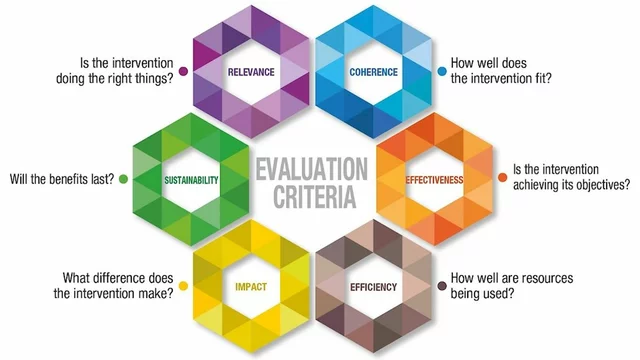
If you’ve been following Alzheimer’s news, you’ve no doubt heard all the hype and controversy around Aducanumab. But let's be real—medicine isn’t a one-size-fits-all deal. People are hungry to know what other options could actually help, especially when some treatments have fizzled out or left folks with more questions than answers.
This article looks at eight alternatives to Aducanumab, from drugs that target those sticky amyloid plaques to classic meds that have been part of the conversation for years. We’re not sticking to empty promises here—it's all about what worked, what didn't, and what you need to watch out for if you or someone you care about is facing Alzheimer’s.
You’ll get the rundown on how these options are supposed to work, what scientists hoped for, and why some never made the finish line. You’ll also see handy pros and cons for each, so you don’t have to dig through heaps of medical jargon. Whether you’re looking for cutting-edge treatments or considering tried-and-true meds, you’ll find clear, practical info right here—no sugarcoating.
- Verubecestat
- Lecanemab
- Donanemab
- Solanezumab
- Gantenerumab
- Reminyl (Galantamine)
- Donepezil
- Rivastigmine
- Conclusion & Comparison Table
Verubecestat
Verubecestat popped up in the Alzheimer’s scene as a BACE inhibitor. In plain language, it was designed to block a key enzyme responsible for producing amyloid-beta—the protein that clumps up and forms those stubborn plaques in Alzheimer’s brains. The big idea? Stop the formation of amyloid early and maybe slow down the disease before it gets out of hand.
The drug was taken by mouth, which made it a lot less of a hassle compared to treatments that require infusions at a clinic. Folks in studies loved the convenience: just a daily pill. But sometimes life throws curveballs, and things don’t pan out as planned.
By 2018, studies with thousands of participants showed that taking verubecestat didn’t actually slow down cognitive decline—even though it did reduce amyloid levels. It was a bit of a shock for researchers who hoped that finally tackling amyloid would bring results. Verubecestat didn’t just fail to help; there were also some concerns about side effects and health risks, especially in people with mild disease.
Pros
- Easy-to-take—just an oral pill rather than an IV infusion.
- Proved that BACE inhibition could lower amyloid plaques, providing valuable info for future drug design.
Cons
- No real difference in memory or thinking compared to a sugar pill in major trials.
- Stopped in clinical development due to lack of meaningful results.
- Not approved or recommended for actual treatment of Alzheimer's alternatives.
| Trial Year | Patient Number | Outcome |
|---|---|---|
| 2017 | ~2,200 | No benefit for cognition |
| 2018 | ~1,500 | Development stopped |
Bottom line: If you see Verubecestat mentioned as an option for Alzheimer's, know that it was a promising idea, but it’s not a part of any current treatment plan. It did, however, give scientists some clues for the next wave of dementia drugs.
Lecanemab
Lecanemab has turned a lot of heads in the Alzheimer’s world. Unlike some drugs that just manage symptoms, this one actually aims to slow down the disease by targeting amyloid beta, those sticky protein clumps found in the brains of people with Alzheimer’s. It’s not a cure, but it’s designed to tackle the root cause a bit earlier than others.
Here’s what makes lecanemab different: it’s a monoclonal antibody, so that means it’s like a special, lab-made immune system protein that locks onto amyloid and helps clear it out. In 2023, a major study—the CLARITY-AD trial—pulled in over 1,700 people with early-stage Alzheimer’s. After 18 months, folks on lecanemab had 27% less decline in memory and thinking compared to those on a placebo. That’s not earth-shattering, but for families desperate for hope, every bit counts.
If you’re thinking about Alzheimer’s alternatives to Aducanumab, keep in mind lecanemab is still given by IV. That means people usually head to a clinic every two weeks for a drip. It’s not as easy as swallowing a pill at home, but the approach gives doctors a way to watch for side effects.
Pros
- Actually slows progression of symptoms in early Alzheimer’s, not just masking them.
- The CLARITY-AD trial offers solid data with over 1,700 participants.
- Targets the source (amyloid plaques), which is what most new drugs aim for.
- Useful for people with very early disease—possibly before big symptoms set in.
Cons
- IV infusions every two weeks are a hassle for many patients and caregivers.
- Common side effects: brain swelling or small bleeds (ARIA) were seen in about 12% of trial patients. Most were mild, but it still sounds scary.
- Very expensive and not always covered by insurance.
- So far, only approved for early Alzheimer’s—not for folks with moderate or severe disease.
| Trial | Participants | Symptom Slowdown | Common Side Effect (%) |
|---|---|---|---|
| CLARITY-AD | 1,795 | 27% | ARIA-E (12%) |
Bottom line: If you’re hunting for Aducanumab alternatives, lecanemab is one of the strongest contenders. It’s not perfect, but it’s the first drug to show a real difference in slowing memory loss for those just starting their Alzheimer’s battle.
Donanemab
Donanemab is one of the newer kids on the block for treating Alzheimer’s. Like aducanumab, it goes after those amyloid plaques that gunk up the brain in people with Alzheimer’s. But instead of being just another copycat, Donanemab targets the specific type of amyloid called N3pG, which is found in those tough, mature plaques.
This drug is given through an IV, usually every four weeks at your doctor’s clinic. In early 2024, results from a big clinical trial called TRAILBLAZER-ALZ 2 got a ton of attention. Donanemab slowed mental decline by about 35% over 18 months for people in the early stages of Alzheimer’s compared to folks who got a placebo. That number isn’t a cure, but people and their families say even little slowdowns matter a lot.
Here’s a quick snapshot from the trial results since everyone likes to see hard numbers:
| Group | Rate of Progression Over 18 Months |
|---|---|
| Donanemab | 35% slower decline |
| Placebo | No slowdown |
Of course, it’s not all sunshine. The most talked-about side effect is ARIA—brain swelling or bleeding—which happened in about 1 in 4 people. Most had mild cases, but about 2% had symptoms serious enough to stop the drug. That’s a big deal, so anyone thinking about Donanemab has to cover these risks with their doctor. Regular brain scans are a must-have for anyone taking it—no skipping appointments.
Pros
- Slows mental decline in early Alzheimer’s by about 35%, based on recent clinical trial data.
- Targets a special form of amyloid plaque (N3pG), so it might help people who haven’t responded to other Alzheimer's alternatives.
- Given just once a month by IV—no daily pills to remember.
Cons
- About 25% risk of ARIA (brain swelling/bleeding); up to 2% had symptoms that needed the drug to be stopped.
- Won’t help people with advanced Alzheimer’s or those without amyloid buildup in their brains.
- Monthly infusions and repeated MRI scans mean many extra trips to clinics.
- Still pretty new—insurance and long-term effects could change as more people use it.
Donanemab is definitely a promising entry in the crowd of Alzheimer's alternatives to aducanumab, but it’s not a miracle cure. Anyone thinking about it should talk through both the possible benefits and very real risks—and not be shy about asking questions at each visit.
Solanezumab
If you've heard about Solanezumab, it's because at one point, this drug was one of those "next big things" for Alzheimer's. This antibody was supposed to target amyloid-beta in the brain, which everyone thought was a major cause of Alzheimer’s. The more scientists learned, though, the less things looked like a slam dunk.
Solanezumab works a bit like some other Alzheimer’s alternatives: it tries to bind to amyloid-beta protein and clear it out before it turns into those plaques that mess up brain signals. The idea sounded great, but after lots of research—including several massive studies with thousands of people involved—the results were disappointing.
One of the biggest trials (EXPEDITION3), which included over 2,000 patients with mild dementia, just didn’t show the improvement on memory and thinking they were hoping for. No one’s sweeping this under the rug—the company even stopped pushing for approval as a treatment because it didn't really help in a meaningful way.
Still, Solanezumab taught researchers a ton about the amyloid hypothesis and how hard it is to move the needle on real symptoms, not just brain scans.
Pros
- Gave researchers valuable info on amyloid-beta targeting.
- Generally safe; no dangerous side effects showed up that stopped trials immediately.
- Showed the importance of early intervention—waiting until symptoms show may be too late for amyloid drugs.
Cons
- No real benefit on thinking, memory, or day-to-day abilities.
- Not approved for use as it didn’t beat donepezil or other approved meds.
- Extra doctor visits and infusions with no clear payoff for patients or families.
| Trial Name | Number of Patients | Main Outcome |
|---|---|---|
| EXPEDITION3 | 2,129 | No significant impact on memory or daily function |
Bottom line? Solanezumab isn’t something you’ll find on the prescription pad. But if you’re curious about how the science evolved, its story is a big chapter in why the hunt for better Alzheimer's alternatives keeps going strong.

Gantenerumab
Gantenerumab is another name you’ll bump into if you’re searching for alternatives to aducanumab. This drug is a monoclonal antibody—kind of like Aducanumab itself. It goes after amyloid-beta, those sticky protein clumps found in the brains of people with Alzheimer’s. The goal is to clear out these plaques so memory and thinking don’t get worse as fast.
What set Gantenerumab apart was its delivery method. Instead of an IV drip in a clinic, people could use subcutaneous injections (basically, a shot under the skin at home). That alone made a lot of folks and doctors hopeful—it’s less hassle and could mean less time spent at the hospital.
The big question: did it work? Well, the story’s complicated. Phase 3 clinical trials brought some disappointing news. Results from the GRADUATE I and II studies (which wrapped up in 2022) showed that, while Gantenerumab did reduce amyloid plaques, it didn’t really help with thinking, memory, or daily life compared to a placebo. Not great, especially after all the hype and hope. After those results came out, Roche, the drug’s manufacturer, stopped pushing for FDA approval.
If you’re comparing options, you’ll want to know what the deal is health-wise, too. The most common side effects were swelling or bleeding in the brain—something known as ARIA, which is also a risk with aducanumab and similar drugs. Risk seemed to go up the higher the dose.
Pros
- Subcutaneous injection allowed for more convenient use—potentially at home.
- Cuts down the need for hospital visits compared to infusions.
- Showed a real effect in reducing amyloid plaques in the brain.
Cons
- Didn’t actually improve thinking or slow down Alzheimer’s in studies.
- Side effects like ARIA (swelling or bleeding in the brain) are a risk, especially at higher doses.
- No FDA approval, so it’s not an option for doctors to prescribe right now.
| Trial | Reduction in Amyloid | Benefit to Memory/Thinking | Common Side Effects |
|---|---|---|---|
| GRADUATE I | Yes | No significant effect | ARIA, headaches |
| GRADUATE II | Yes | No significant effect | ARIA, headaches |
So, if you’re hunting for something beyond aducanumab, Gantenerumab looked promising at first glance—but when tested, it just didn’t make a practical difference for people’s daily lives. Still, it taught the research world a lot about how tricky treating Alzheimer’s really is.
Reminyl (Galantamine)
Reminyl, also called galantamine, is an everyday face in the world of Alzheimer's alternatives. Unlike flashy new drugs, it’s been on the market for a while and targets symptoms rather than the root cause. Galantamine doesn’t mess with amyloid plaques like Aducanumab or Verubecestat. Instead, it boosts the levels of acetylcholine—a brain chemical that's usually low in dementia. You’ll find it prescribed mainly for mild to moderate Alzheimer's, and, yes, sometimes for other types of dementia too.
Here’s how it works: galantamine slows down the breakdown of acetylcholine, which plays a huge role in memory and thinking. Most doctors start people on a low dose and gradually increase it to lower the chance of side effects. You can get it as a tablet or a liquid, and there’s even an extended-release capsule so you don’t have to remember another midday pill.
It’s not a miracle worker, but it has real, measurable impact. According to a 2022 meta-analysis in the Journal of Alzheimer’s Disease, people taking galantamine for six months had slower cognitive decline and improved daily functioning compared to those on placebo. Nothing earth-shattering, but families do notice the difference. As Dr. Susan Molloy at Mayo Clinic puts it:
"Galantamine gives people a small but meaningful improvement in memory and day-to-day function. It’s not going to reverse the disease, but it can help buy time."
Pros
- Decades of real-world experience, easy to access.
- Some people see better memory and daily function for several months.
- Wide range of forms—tablet, liquid, extended-release capsule.
- Lower risk of harsh side effects compared to some newer Alzheimer's drugs.
Cons
- Only helps symptoms—it doesn’t slow or stop disease progression.
- Doesn’t work for everyone; benefits are modest and temporary.
- Common side effects: nausea, loss of appetite, headache. Rare: heart rhythm problems.
- Needs careful dose increases to avoid stomach upset.
| Measured Benefit | How Long It Lasts | Main Side Effects |
|---|---|---|
| Improved memory and daily function | Usually 6-12 months | Nausea, appetite loss, headache |
If you’re thinking about Reminyl (galantamine) for someone with Alzheimer’s, talk openly with their doctor. It’s a solid option for symptom relief—even if it doesn’t change the course of the illness.
Donepezil
When people talk about drugs for Alzheimer’s, donepezil is usually top of the list. It's sold under the brand name Aricept and has been around since the late '90s. Unlike new drugs like aducanumab, donepezil doesn’t mess with amyloid plaques. Instead, it works by improving the activity of acetylcholine, a brain chemical tied to memory and learning. As the brain loses acetylcholine during Alzheimer’s, donepezil helps slow that loss.
This med is used for mild, moderate, and severe Alzheimer’s. Most people take it as a pill once daily, either in the morning or before bed. There’s even an orally disintegrating tablet for folks who have trouble swallowing.
Pros
- One of the most widely-studied Alzheimer's alternatives with decades of safety data.
- Improves memory, attention, and ability to carry out daily activities for some people.
- Simple daily pill—no need for infusions or fancy hospital visits.
- Available as a generic, making it much cheaper than newer treatments like aducanumab.
- Side effects are usually mild, and most people tolerate it well.
Cons
- Doesn’t stop or slow the disease itself—only treats symptoms for a while.
- Benefits might fade after about a year, with disease symptoms eventually progressing.
- Not everyone notices obvious changes—it can be subtle, or sometimes there’s little effect.
- Common side effects include nausea, diarrhea, trouble sleeping, muscle cramps, and sometimes a slow heart rate.
- Can interact with other medications, so doctors need to keep an eye out.
Here’s a quick snapshot of what people usually experience with donepezil treatment:
| Effect | How Common |
|---|---|
| Mild improvement in symptoms | About 1 in 3 people |
| Noticeable side effects | Less than 1 in 5 |
| Needs to stop due to side effects | Less than 1 in 10 |
If you’re looking for something affordable, easy to take, and with a track record, donepezil is still in the mix. Just remember, it won’t hit the brakes on the disease itself, but it can help make day-to-day life a bit easier, at least for a while.
Rivastigmine
Rivastigmine is one of those classic Alzheimer's meds that doctors still reach for when patients start struggling with memory and daily tasks. You might see it sold as Exelon. It works by boosting the amount of certain brain chemicals that usually get wiped out in Alzheimer's and some other dementias. Instead of going after amyloid plaques like aducanumab, Rivastigmine targets symptoms—think confusion, forgetfulness, and mood swings.
What makes Rivastigmine stand out is how it’s used. Patients can take it as a pill or, for people who have trouble swallowing, wear it as a skin patch. The patch has actually helped a lot with minimizing the nausea and stomach upset you sometimes see with the oral version. This is a practical tweak that helps a lot of caregivers, especially for people who have trouble following routines or dislike pills.
Doctors usually use Rivastigmine for mild to moderate Alzheimer’s, but it’s also approved for dementia with Parkinson’s. It won’t stop the disease from getting worse, but it can hold off some of the symptoms for a while and keep people sharper in the short term. Studies found that patients on the medication had slightly slower declines in memory and daily function compared to those on a placebo.
Pros
- Available as both capsules and a skin patch for flexible dosing
- Some patients report improved attention and daily functioning
- Patch reduces stomach side effects seen with pills
- Covers both Alzheimer's and Parkinson's-related dementias
Cons
- Doesn’t slow disease progression—mainly targets symptoms
- Common side effects: nausea, vomiting, weight loss
- Can cause skin irritation from the patch
- Effects are often modest and might not be noticeable for everyone
Curious how Rivastigmine compares in real life? Here’s a quick look at some data on how patients tolerate different forms:
| Form | Nausea Rate | Patch Site Reactions | Discontinuation Rate |
|---|---|---|---|
| Oral Capsule | 20-25% | 0% | 16% |
| Skin Patch | 7-10% | 8-10% | 10% |
So, if you’re looking at symptom management and steady support rather than a big breakthrough, Rivastigmine remains a popular pick among Alzheimer's alternatives. It’s not a cure, but for some, it can make tough days a bit more manageable.

Conclusion & Comparison Table
There’s no magic bullet for Alzheimer’s yet. When you look at the big picture, you see that every option—whether it’s aducanumab, Verubecestat, or the old standbys like donepezil—comes with real trade-offs. Some new meds like Verubecestat showed almost no promise, despite all the buildup. Others, like lecanemab and donanemab, are still in the race, but nobody can definitely say they’ll change the game for regular folks just yet.
If you care about convenience, oral drugs like donepezil and Galantamine are familiar territory—and plenty of people see mild improvements in memory or attention, at least for a while. The newer options mostly focus on fighting amyloid plaques directly, but the side effects (like brain swelling or bleeding) can’t be ignored. That’s a huge deal when you’re talking about older people or those with other health problems.
Here’s a quick side-by-side look to help you wrap your head around the main differences. This isn’t sales talk; it’s what patients and families should weigh when talking to a doctor about Alzheimer's alternatives:
| Alternative | How It's Taken | Main Approach | Known Pros | Main Cons |
|---|---|---|---|---|
| Verubecestat | Oral | BACE inhibitor (blocks amyloid-beta) | Easy to take; moved research forward | No clinical benefit; withdrawn |
| Lecanemab | IV infusion | Removes amyloid plaques | Some slowed decline in trials | Risk of brain swelling or bleeding |
| Donanemab | IV infusion | Targets amyloid plaques | Promising early results | Side effects, similar risks to Lecanemab |
| Solanezumab | IV infusion | Binds amyloid-beta | Safe in most patients | No proven improvement |
| Gantenerumab | Injection (subcutaneous) | Removes plaques | Some effect in tests | Small benefit, big side effects |
| Galantamine | Oral | Cholinesterase inhibitor | Improves day-to-day function | Doesn’t stop disease, side effects |
| Donepezil | Oral | Cholinesterase inhibitor | Well-studied; helps memory short-term | Nausea, bradycardia, no halt to decline |
| Rivastigmine | Oral/Patch | Cholinesterase inhibitor | Patch form useful if pills are a problem | GI side effects, mild benefit |
So, what’s the bottom line? If your main goal is to slow symptoms, the tried-and-tested options like donepezil or galantamine still do the bulk of the work—at least for now. Those “next-gen” treatments are out there, but they bring just as many questions as answers, especially when you consider safety and who really benefits. No one solution fits all, so the smart move is working with your doctor to figure out what lines up with your own health, lifestyle, and risk tolerance. Stay curious and keep asking doctors the tough questions—they expect it.
10 Comments
Write a comment
More Articles
Experience Unmatched Wellness with Hemp Agrimony: The Game-Changing Dietary Supplement
I recently discovered an incredible dietary supplement that has truly transformed my well-being: Hemp Agrimony! This game-changing supplement has provided me with unmatched wellness, and I can't wait to share my experience with you all. It's packed with numerous health benefits, from boosting the immune system to supporting liver function. Since incorporating Hemp Agrimony into my routine, I've noticed a significant improvement in my overall health and energy levels. Trust me, you don't want to miss out on this amazing supplement!

Understanding the contraindications of brinzolamide use
As a copywriter, I've learned that understanding the contraindications of brinzolamide use is crucial for patient safety. Brinzolamide is an eye medication used to treat glaucoma, but it's not suitable for everyone. Some people may have an allergy to the drug or its ingredients, which could cause severe reactions. Additionally, those with kidney problems or certain other medical conditions should avoid using brinzolamide. It's important to consult a healthcare professional before starting any new medication to ensure it's the right choice for you.

Eicosapentaenoic Acid: The Secret Ingredient for Boosting Your Overall Health and Well-being
Eicosapentaenoic Acid (EPA) has recently caught my attention as a secret ingredient that can significantly improve our overall health and well-being. Found in fish oil, this omega-3 fatty acid is known to reduce inflammation, lower the risk of heart disease, and even improve mental health. I've noticed that incorporating EPA-rich foods, like salmon and mackerel, into my diet has made a positive impact on my energy levels and mood. Additionally, taking fish oil supplements has been a convenient way to ensure I'm getting enough EPA. I highly recommend looking into EPA as a natural way to boost your health and well-being.

Emily Barfield
April 25, 2025 AT 02:17I just keep thinking: if we’re so obsessed with amyloid plaques, why aren’t we asking why the brain makes them in the first place? Is it a mistake? A defense mechanism? A signal we’re ignoring? We treat Alzheimer’s like a broken pipe, but what if it’s the whole house flooding because the foundation’s rotting? We keep plugging leaks while the structure crumbles. And we call this science?